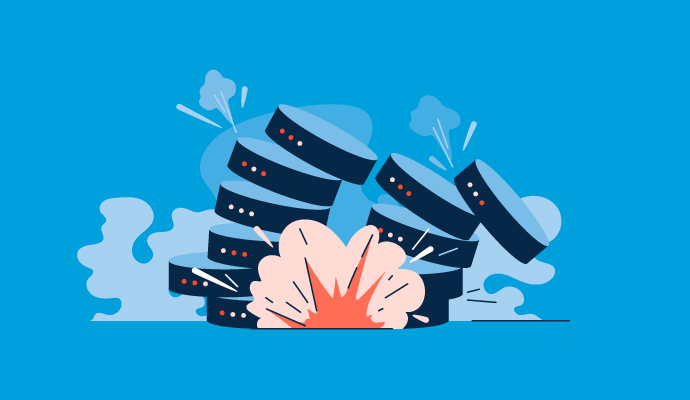The Importance of Effective Information Destruction Practices in Shielding Sensitive Information and Ensuring Computer Safety And Security
In an age where data violations are significantly usual, the relevance of efficient information devastation practices can not be overemphasized. Organizations face substantial risks when sensitive information is inadequately dealt with, potentially causing unapproved accessibility and serious economic effects. Implementing robust data damage approaches not only alleviates these risks yet additionally lines up with legal conformity needs, making certain that organizations support their reputation and foster customer trust fund. The concern continues to be: what certain strategies can be used to enhance these practices, and exactly how can organizations successfully incorporate them into their general cybersecurity framework?
Comprehending Information Devastation
Understanding information devastation is essential in today's electronic landscape, where sensitive details can quickly be compromised. Effective data devastation entails not just ensuring yet removing files that information is irretrievable with thorough approaches. This procedure is crucial for organizations that deal with personal client info, intellectual building, or inner files, as any kind of breach can result in severe monetary and reputational consequences.
Data destruction includes various methods, including shredding physical media, degaussing magnetic storage gadgets, and using software-based services that overwrite data numerous times. Each approach serves a certain function and needs to line up with the level of sensitivity of the information being dealt with. Physical destruction is typically chosen for tough drives containing extremely personal information, while software program approaches could be enough for less delicate information.
Furthermore, adhering to market requirements and guidelines, such as the General Data Protection Law (GDPR) or the Health Insurance Coverage Portability and Accountability Act (HIPAA), is imperative for conformity and to alleviate lawful risks. Organizations must create a robust information devastation policy, train workers on finest practices, and routinely examine their treatments to ensure that all delicate details is disposed of safely and successfully.
Risks of Inadequate Practices
Inadequate data destruction techniques subject organizations to substantial threats that can have far-ranging effects. When delicate info is not properly taken care of, it remains susceptible to unauthorized accessibility, which can lead to information violations and identification theft. Such cases not only jeopardize the safety and security of individuals but additionally tarnish the organization's online reputation, resulting in a loss of customer trust fund and potential monetary consequences.
Furthermore, regulatory conformity is significantly strict in many industries. Failing to follow data devastation guidelines can result in large fines and lawsuits versus companies. These penalties can strain monetary resources and draw away focus from core company procedures.
Additionally, the misuse of residual data can result in copyright burglary or company reconnaissance, endangering affordable benefits (data destruction). The influence of poor data destruction expands beyond prompt financial losses; it can likewise lead to long-term damage to brand name stability and market setting

Organizations need to acknowledge that information protection is not only concerning protecting against violations; it also encompasses the liable management of information throughout its lifecycle. Neglecting effective data damage methods can have devastating effects, underscoring the necessity for robust measures to mitigate these risks.
Ideal Practices for Information Devastation
Carrying out effective information damage techniques is vital for securing delicate information and maintaining compliance with governing requirements. Organizations needs to take on a multi-faceted method to guarantee that data is irretrievable, thus protecting against unauthorized access and possible violations.
First, information should be categorized based upon level of sensitivity, allowing companies to apply suitable destruction methods customized to the degree of risk. For electronic information, making use of software-based data-wiping devices that follow industry requirements can properly overwrite existing data. Physical devastation methods, such as shredding or degaussing, are vital for devices that save sensitive info, ensuring complete removal.
Developing a clear data retention plan is important, describing how much time different sorts of information need to be retained prior to damage. Regular audits of information storage systems are additionally necessary to determine obsolete or unnecessary information requiring elimination.
Moreover, training employees on the significance of data destruction and the particular protocols to adhere to fosters a culture of protection within the organization. Lastly, keeping documentation of information destruction processes provides responsibility and sustains conformity with interior policies and outside guidelines. By adhering to these ideal practices, companies can dramatically mitigate the threats related to data exposure.
Legal and Compliance Considerations

Failure to abide by these guidelines can cause extreme fines, including significant fines and reputational damages. Organizations must apply a robust information destruction policy that straightens with these legal frameworks and gives clear guidelines on the correct methods of information disposal, whether physical shredding or digital cleaning.
In addition, preserving paperwork of data devastation activities is essential for demonstrating conformity throughout audits or assessments. By prioritizing lawful and compliance factors to consider, organizations can boost their information protection see stance and foster count on with customers and stakeholders, inevitably adding to a much more secure information administration setting.
Advantages of Effective Data Destruction
Reliable information damage techniques extend past plain compliance; they use significant advantages to companies that prioritize them. By guaranteeing that delicate details is irretrievably destroyed, companies reduce the threat of data breaches and the possible monetary effects associated with them. This positive strategy not only safeguards versus unapproved gain access to yet likewise enhances the overall dependability of the company in the eyes here of stakeholders and customers.
Applying robust information destruction methods, such as physical devastation of storage space gadgets or advanced information wiping strategies, contributes to the strengthening of a company's cybersecurity position. data destruction. It decreases the probability of intellectual property theft and shields proprietary information, thus maintaining an one-upmanship in the marketplace

Conclusion
In final thought, efficient data devastation methods are necessary for protecting sensitive information and improving general computer safety. Eventually, a commitment to robust information damage approaches fosters a culture of duty, thus strengthening an organization's cybersecurity position and keeping customer depend on.
